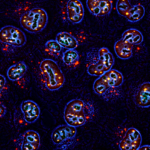Link to Pubmed [PMID] – 2542014
EMBO J. 1989 Feb;8(2):429-33
Retinoic acid (RA) is a vitamin A derivative that exhibits major effects on biological processes such as cell differentiation and embryo pattern formation. Two human retinoic acid receptors (RAR alpha and beta) have been recently characterized. These receptors are encoded by two genes and their affinities for RA differ, suggesting that these two nuclear receptors may have distinct roles in mediating the varied biological effects of RA. Here we show that RAR alpha and beta differ in the regulation of expression of their mRNAs. Different levels of RAR alpha and beta transcripts were found in the various human tissues analysed. In addition, treatment of human hepatoma cells with RA leads to a rapid 10- to 50-fold increase in RAR beta mRNA levels, whereas RAR alpha mRNA expression is not affected. The induction of RAR beta transcription does not require de novo protein synthesis but is completely abolished by inhibitors of RNA synthesis. Nuclear transcript elongation assays indicate that the mechanism of RAR beta mRNA induction lies at the transcriptional level. These data demonstrate that the RAR beta gene is a primary target for RA. The differences in regulation of RAR gene expression might be a fundamental aspect of retinoid physiology and may prove especially important in the analysis of the morphogenic properties of RA.

